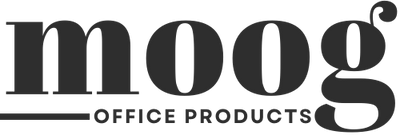Distraction is the default in modern work environments—whether it's Slack messages, noisy coworkers, browser tabs, or that irresistible pull of your phone. The ability to focus deeply has become a competitive advantage. It’s not about working more; it’s about working better. Here’s how to protect your focus and get your best work done—even when distractions are everywhere.
Why Focus Matters More Than Ever
- Deep work creates high-value results—shallow multitasking doesn’t
- Fewer mistakes come from full attention and mental clarity
- Faster task completion means fewer late nights and rework
- Mental fatigue decreases when you’re not context-switching constantly
Distraction is expensive. Rebuilding focus takes 20–25 minutes after each interruption. Protecting your attention is one of the most productive things you can do.
1. Audit Your Distractions
Before improving your focus, understand what’s breaking it.
📝 Ask yourself:
- What distractions happen most often (Slack, email, noise, your phone)?
- Are they self-imposed or external?
- When do they tend to show up (time of day, type of task)?
Write down the top 3 distractions you face daily—and commit to reducing just one this week.
2. Use the Focus-Time Formula: 90 + 20 + 10
This research-backed rhythm works well for knowledge work:
- 90 minutes of focused work on a single task (deep work)
- 20 minutes of lighter admin work or communication
- 10-minute break—walk, stretch, hydrate, no screens
This cycle balances brain power with recovery, keeping your mind clear and alert longer.
3. Craft a Focus-Friendly Workspace
Your physical environment impacts your attention span. Aim for a space that minimizes stimulation and maximizes clarity.
✅ Setup tips:
- Declutter your desk—only keep what you need
- Use noise-canceling headphones or focus playlists
- Add calming visuals like plants or minimalist decor
- Keep a notepad nearby for ideas or reminders, so they don’t bounce around your head
🖥️ Bonus: Use full-screen mode to block distractions while working on your computer.
4. Silence the Noise—Digitally and Physically
Digital notifications are one of the biggest culprits of broken concentration. Take control:
- Turn off notifications on your phone and apps (or use Focus/Do Not Disturb mode)
- Use a tool like Freedom or Cold Turkey to block distracting sites
- Silence unnecessary Slack channels or email alerts during deep work blocks
- Politely let coworkers know when you're in “heads-down” mode
5. Train Your Brain with Micro-Focus
Focus is like a muscle—it strengthens with deliberate effort. If you're easily distracted now, start with small sprints.
Try the Pomodoro Technique:
- 25 minutes focused work
- 5-minute break
- Repeat 4 times, then take a longer break
As your endurance builds, you can lengthen those focus blocks.
6. Build a “Pre-Focus” Ritual
Like warming up before a workout, a focus ritual helps your brain transition into a state of flow.
⏱ Ideas include:
- Making tea or coffee
- Putting on noise-canceling headphones
- Writing down your main task on a sticky note
- Clearing your desk
- Taking 3 deep breaths
The consistency of this routine will cue your brain that it’s time to concentrate.
Moog Desk Sets: Built for Focus and Flow
Focus thrives in order—and that starts with your desk. Moog Desk Sets offer beautifully designed organizers, trays, and accessories to help clear clutter and keep your attention where it belongs. With everything in place, your space becomes a sanctuary for deep work.
Final Thoughts: Attention Is a Skill—Protect It
You can’t eliminate all distractions, but you can dramatically reduce them. By managing your environment, your tech, and your habits, you give yourself the conditions to do meaningful work—calmly, clearly, and powerfully.
Start with one habit. Stick with it. Your focus is worth the effort.

